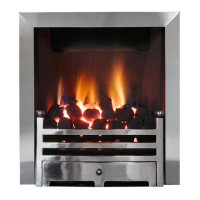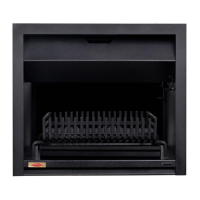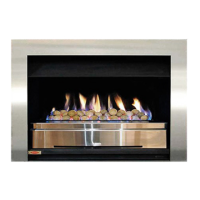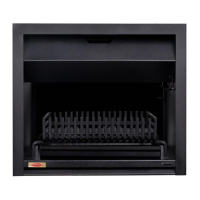Installation and operation of the Mynx
If there is no spillage, the damper can be
set to position 2, and again checking for
spillage. If there is any spillage, turn the
damper back to position 1.
The same process can be followed,
switching to the closed position, and
checking for spillage.
NOTE: The idea is to set the damper to
the smallest position that still allows for
adequate draw.
The fire can now be left to burn for a
while. It must be noted that the size of
the fire will affect the optimum damper
position. The ideal is to add wood at
such intervals that the fire is maintained
in the same intensity, in order to maintain
the damper position.
If the fire is left to die down, it will be
necessary to start opening the damper
again, allowing a better draw.
If a large quantity of wood is added, the
damper should be opened fully, and only
closed down again when the fire is
established.
NOTE: It is important in all situations to set
the damper so that no smoke enters the
room. If in doubt over the damper position,
rather opt for the safer setting and choose
the setting that allows more draw.
6) Maintenance
a) Painting of exposed surfaces.
All surfaces that are exposed outdoors
must be inspected regularly. Any paint
deterioration must be fixed immediately.
All indoor exposed surfaces should be
inspected on a regular basis (at least
annually). Any scratch marks or other
marks showing paint deterioration,
should be repaired using Jetmaster touch-
up paint, immediately.
NOTE: Before painting any surface (indoor
or outdoor) it is important to clean the area
properly to ensure that the new coat of
paint covers no dirt, or rust.
b) The log pan
The log pan is a consumable item. It will
deteriorate during use. The life span of
the log pan will be determined by the
manner in which it is used, the fuel that
is burned as well as the frequency of
use.
It is best to leave a layer of ash in the
bottom of the log pan. This acts as
insulation, improving performance as
well as the lifespan of the log pan.
It is therefore recommended that during
the winter season, the log pan be cleaned
only as necessary. Each night the fire can
be started on top of the ashes of the
fire from the previous fire. This will
typically result in the log pan being
cleaned on a weekly basis.
At the beginning and at the end of the
winter season, the log pan can be
removed completely, all deteriorated
paint films brushed off, and re-coated
using Jetmaster touch-up paint.
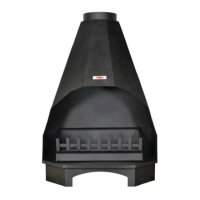
